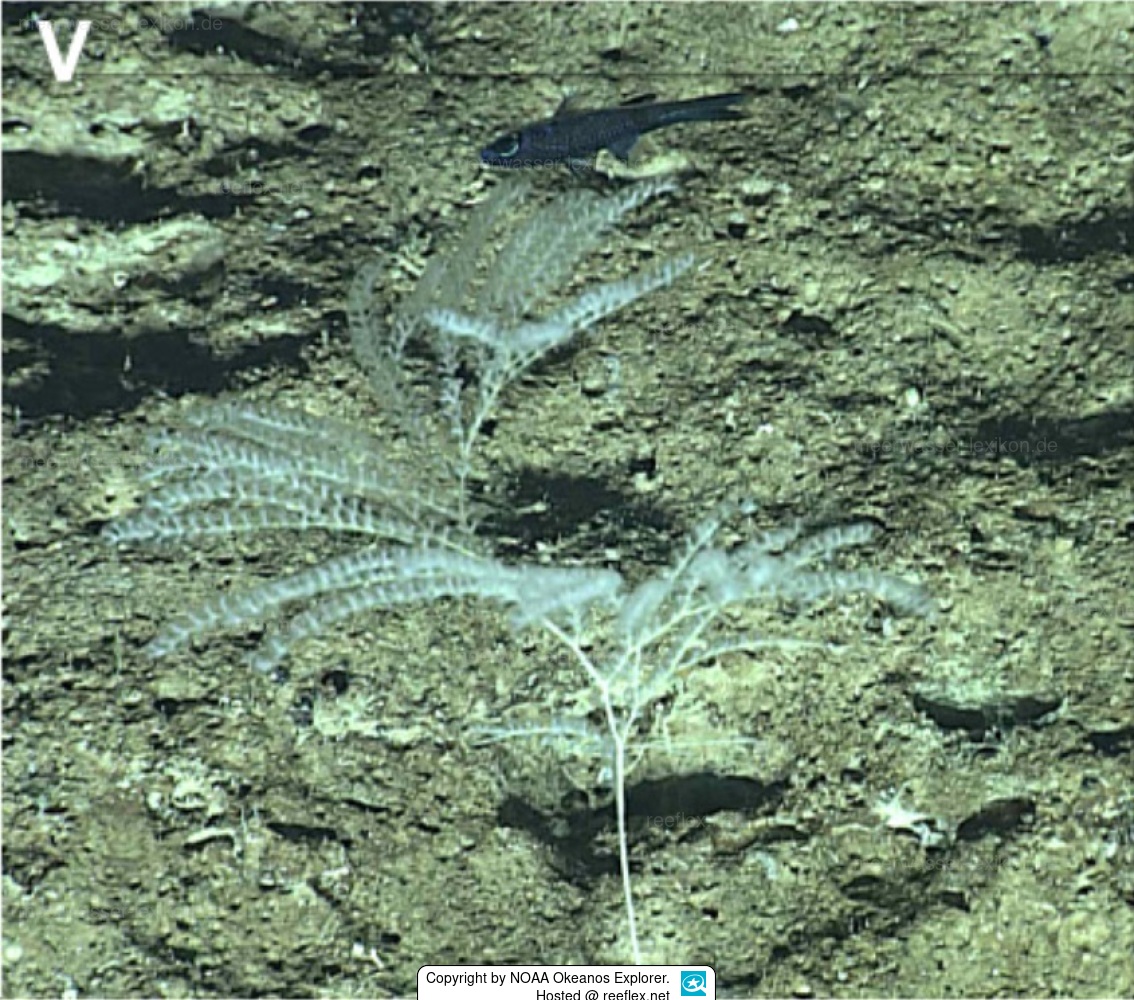Info
Paracalyptrophora spiralis is unique among the nine known species of the genus in its branching form; it is also distinguished by having so few polyps per whorl (usually three), while most other species have four or more.
The gorgonian forms a basal stem that branches, with each secondary branch producing a series of branches on one side of the secondary branch.
The two secondary branches rise in a loose spiral, these branches are up to 9 cm long and often branch once.
The colony has a flaccid consistency'.
Etymology. The name 'spiralis' (Latin for 'sinuous', 'spiral', or 'twisted') refers to the spiralized secondary branches of the colony.
Translated with www.DeepL.com/Translator (free version)
The gorgonian forms a basal stem that branches, with each secondary branch producing a series of branches on one side of the secondary branch.
The two secondary branches rise in a loose spiral, these branches are up to 9 cm long and often branch once.
The colony has a flaccid consistency'.
Etymology. The name 'spiralis' (Latin for 'sinuous', 'spiral', or 'twisted') refers to the spiralized secondary branches of the colony.
Translated with www.DeepL.com/Translator (free version)







 NOAA Okeanos Explorer
NOAA Okeanos Explorer



